Archaeologists excavating a Neolithic site in southeastern Poland discovered artifacts spanning thousands of years, including a rare longhouse from the Linear Pottery culture that was constructed around 5000 B.C.E.
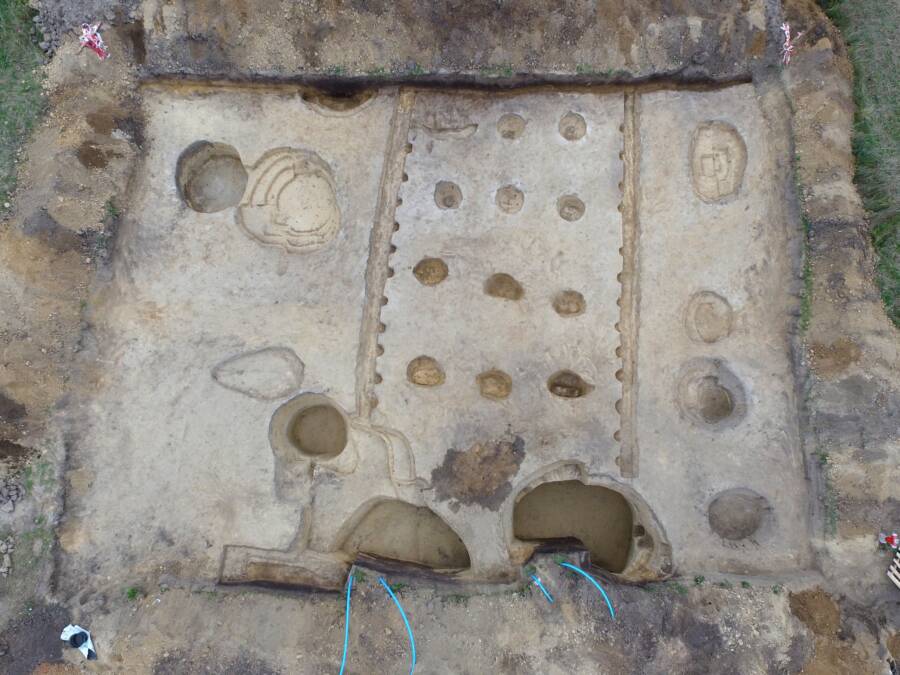
M. Bajka/Provincial Office for the Protection of MonumentsRemnants of a longhouse built by the Linear Pottery culture around 5000 B.C.E.
Recent excavations of a Neolithic site in Sandomierz-Mokoszyn, Poland, uncovered something completely unexpected. An archaeological team that was originally trying to confirm the existence of a settlement dating to 3500 B.C.E. found evidence of an even older village.
Researchers unearthed the remnants of a longhouse built by the Linear Pottery culture between 5300 and 4900 B.C.E. These people were early farmers who were known for the unique designs they carved into the ceramic vessels they crafted. The longhouse is the first of its kind ever found in the region, and it’s providing new insight into this Neolithic culture.
Archaeologists Unearth A Neolithic Longhouse In Poland
A team of archaeologists in Sandomierz-Mokoszyn in southeastern Poland recently set out to confirm the existence of a settlement connected to the Funnelbeaker culture. They found what they were looking for, including large storage pits dating to between 3700 and 3200 B.C.E. containing clay vessels, flint tools, and animal bones. However, they also found much more than they expected.
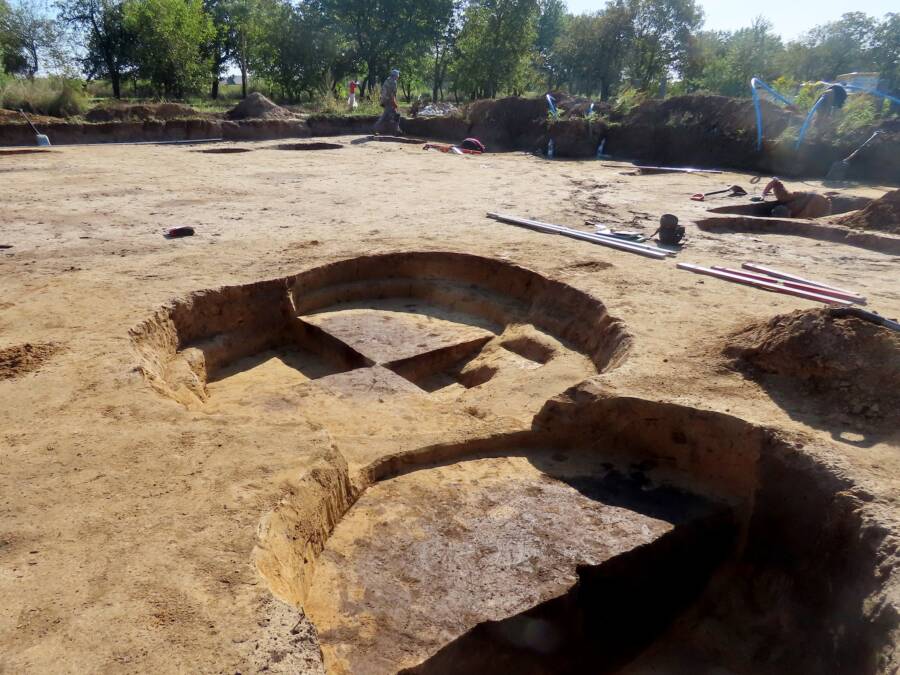
M. Bajka/Provincial Office for the Protection of MonumentsCellars from the Funnelbeaker culture found at the site.
During excavations, researchers unearthed the remnants of a longhouse that was 1,500 years older than the Funnelbeaker artifacts. It belonged to the Linear Pottery culture, early farmers who lived in the area between 5500 and 4500 B.C.E.
The longhouse was about 20 feet wide and more than 65 feet in length. It was constructed using a post-and-beam technique, and its walls were built with material from nearby clay pits. As reported by Ancient Origins, Dr. Marek Florek from the Provincial Office for the Protection of Monuments in Sandomierz stated, “The discovery of the longhouse is the first of its kind in the Sandomierz Upland.”
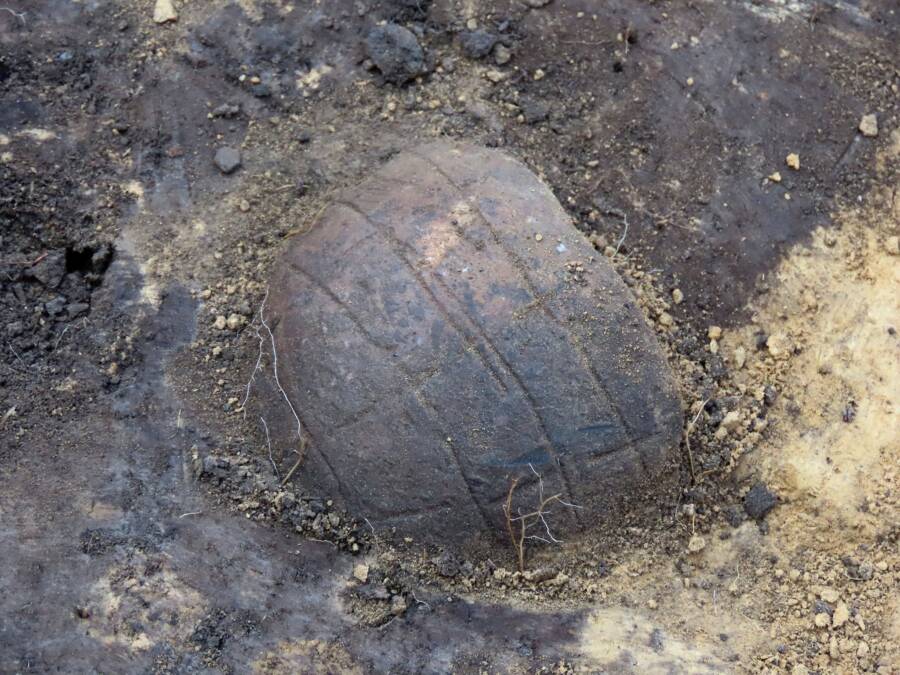
M. Bajka/Provincial Office for the Protection of MonumentsA piece of pottery featuring the namesake designs of the Linear Pottery culture.
Alongside the longhouse, researchers found ceramics decorated in the traditional Linear Pottery culture style, flint tools, and objects made from volcanic glass. Now, they’re working to analyze these artifacts to learn more about the Neolithic people they once belonged to.
New Insights Into The Linear Pottery Culture
Historians believe the people of the Linear Pottery culture group migrated to Poland from Transcarpathia, near modern-day Slovakia and Hungary. It’s known that they excelled in farming and animal husbandry, but the discovery of their longhouse is revealing new information about the way they lived.
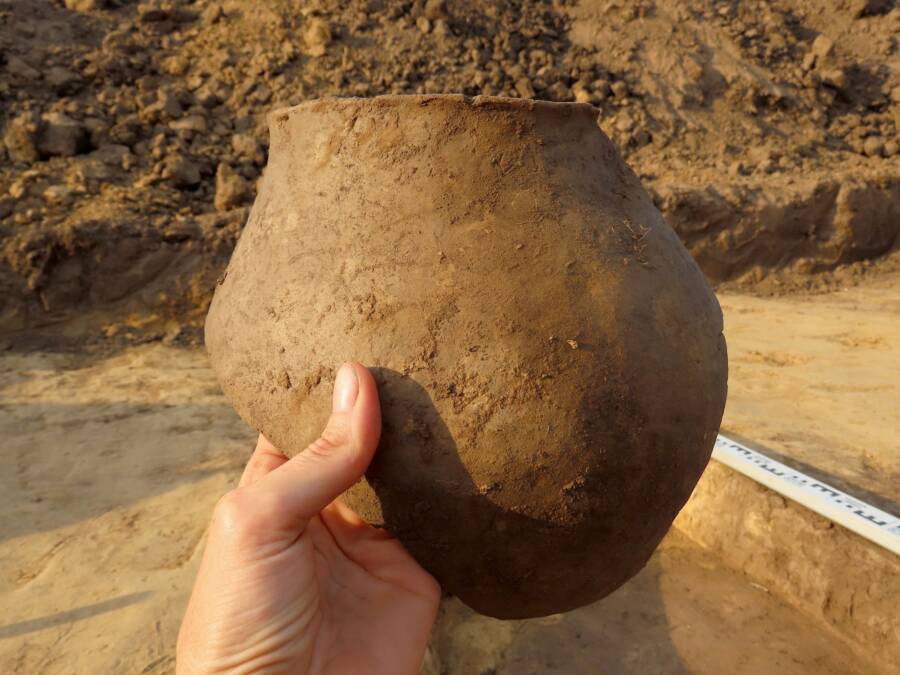
M. Bajka/Provincial Office for the Protection of MonumentsFragments of ceramic vessels from the Linear Pottery culture.
Similar longhouses have been found elsewhere in Poland, but as Florek stated, this is the first uncovered near Sandomierz-Mokoszyn. “This is an interesting discovery that indicates that in the early Neolithic period there was a settlement with permanent buildings, not a makeshift camp,” Florek noted. “Moreover, it also confirms the continuation of settlement in this area over several thousand years.”
The tools archaeologists found are also providing insight into the lives of the Neolithic people. The obsidian artifacts were imported, suggesting the Linear Pottery culture traded with other ancient civilizations.
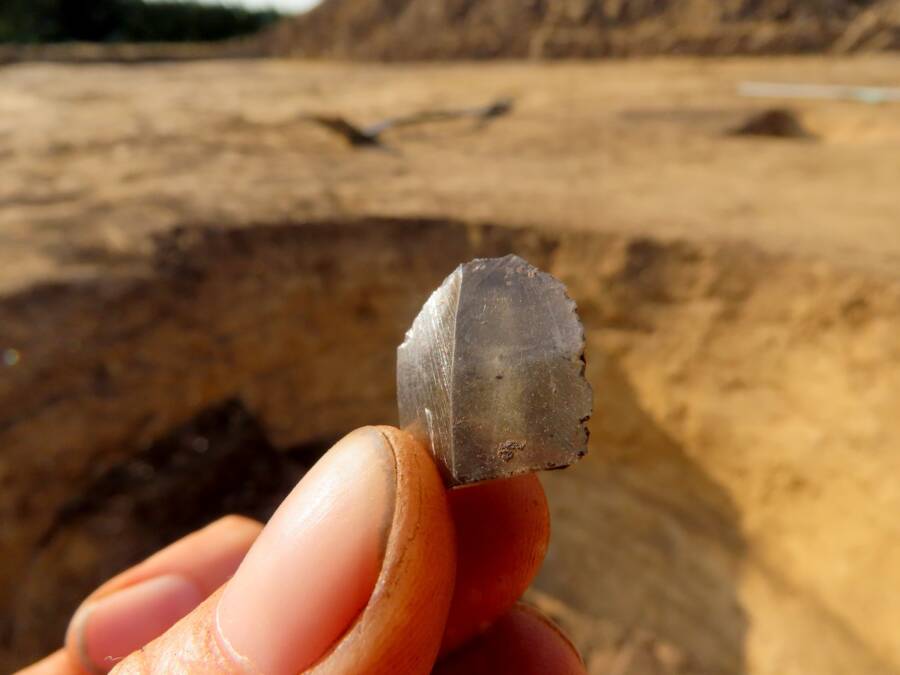
M. Bajka/Provincial Office for the Protection of MonumentsAn obsidian scraper found near the longhouse.
As these artifacts make their way to the Sandomierz Castle Museum for preservation and future public display, they promise to shed even more light on the region’s rich Neolithic heritage.
After reading about the Neolithic longhouse found in Poland, go inside nine of the most fascinating archaeological discoveries of 2023. Then, read about the Lovers of Valdaro, the Neolithic remains of a couple who died together 6,000 years ago.





